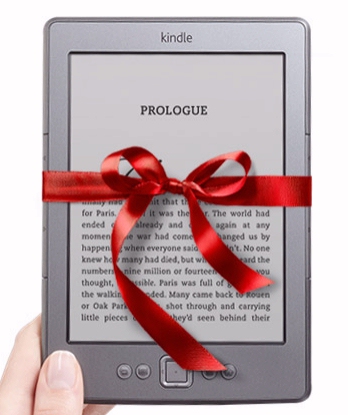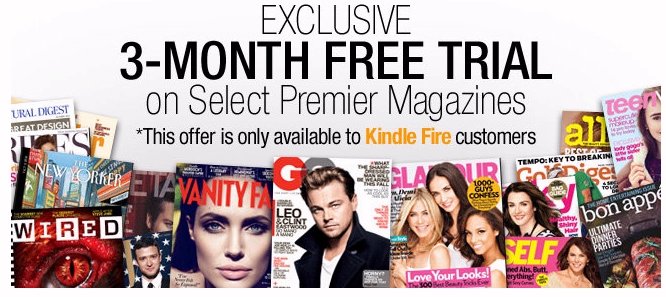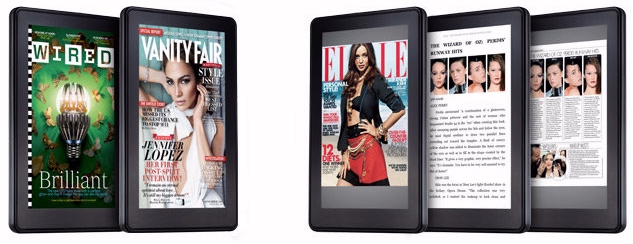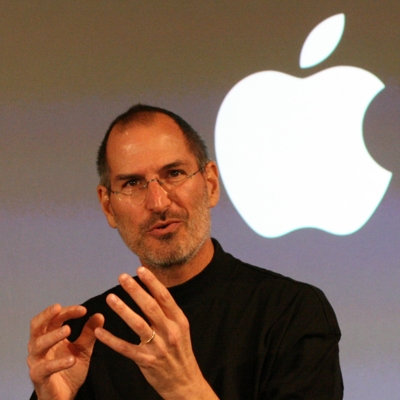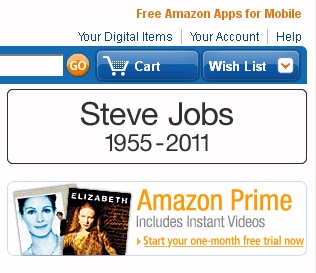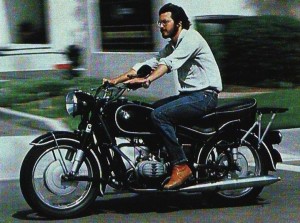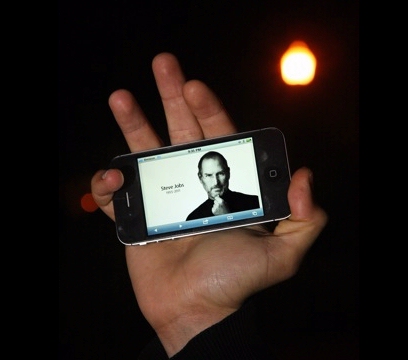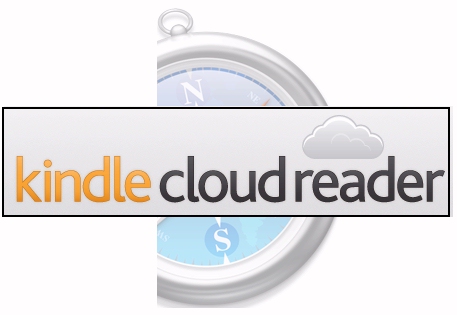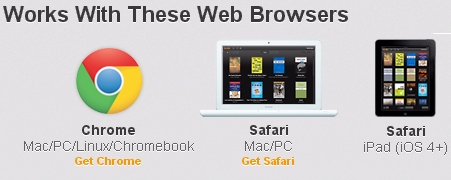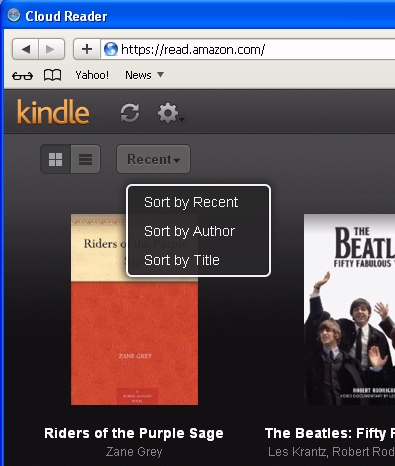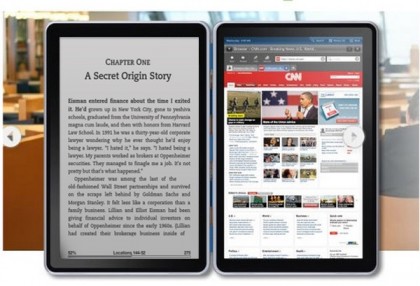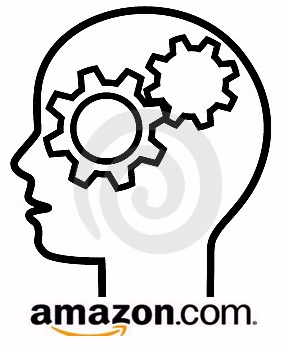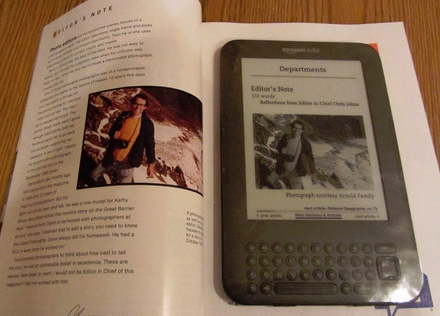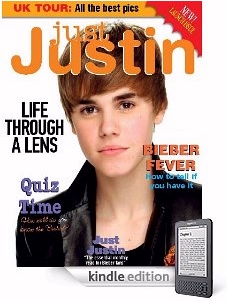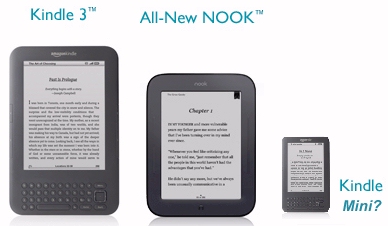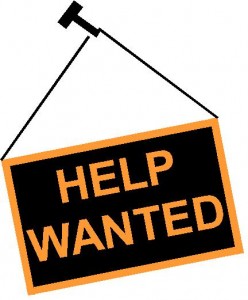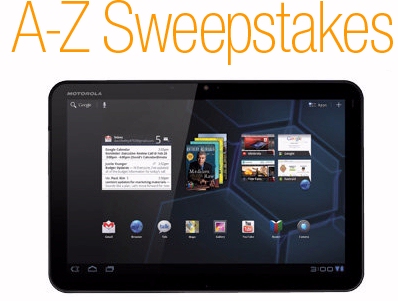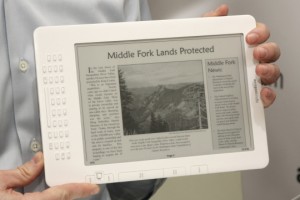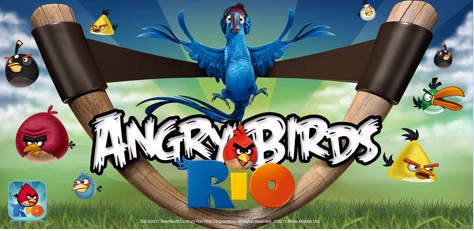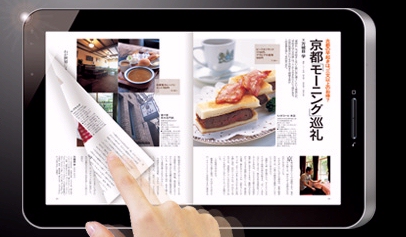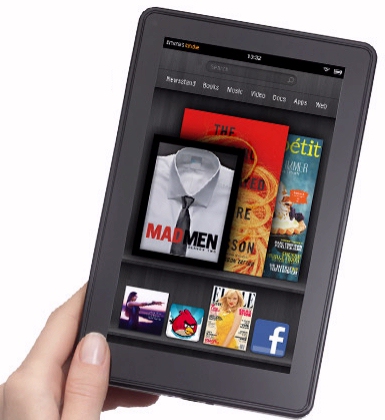
Amazon “just took the gloves off,” begins an article at C|Net. Only days after Barnes and Noble discounted their color touchscreen tablets — to just $199 — Amazon announced an even cheaper price for their own Kindle Fire tablets. “Save $30 with a Certified Refurbished Kindle Fire,” Amazon now advertises on the device’s web page. “Each Certified Refurbished Kindle Fire is tested, certified, and repackaged like new…
For a shortcut to the special offer, just point your computer’s web browser to tinyurl.com/169KindleFire (“Comes with the same one-year limited warranty as a brand-new Kindle Fire…” Amazon is reminding potential buyers.) “[T]his deal first went live on Saturday,” C|Net‘s reporter notes, “and I’ve been checking all weekend to make sure they’re still in stock.
“As of this morning, they are.”
C}Net’s reporter doesn’t even own a Kindle Fire tablet, but writes that “for $169 I’m extremely tempted — especially considering that Amazon backs it with a full one-year warranty, same as new Fires…For all intents and purposes, this refurbished Fire should be the same as a new one — just $30 less. Who’s in?”
I’ve been intrigued by the extra capabilities in Amazon’s color, touchscreen tablets, and yes, they’re more appealing now that the price is cheaper. But is the discount just a hint at an even more interesting possibility? Just hours after C|Net‘s article, a reporter at PC magazine asked an even more intriguing question. Was the Kindle Fire tablet just a beta release?
“Last summer, I was one of the first to write in detail about Amazon’s Kindle Fire, expected in the fall of 2011,” writes Tim Bajarin. “My sources on this were impeccable and early on I got a good idea of what Amazon had up its sleeves. However, during my discussion with my sources on this, one interesting tidbit came up that I have not written about until now…” He reports that even while Amazon was building their 7-inch Kindle tablet, they were already thinking about a much larger tablet, and writes that he now believes “that the larger tablet will be its marquee product and the hopeful cornerstone of its tablet strategy.”
He estimates a larger tablet would cost Amazon around $300 to build, which suggests its ultimate price could come in around $299. Besides the obvious popularity of the iPad, he considers other clues that Amazon’s first tablet device was basically just a trial run. (For example, there’s the odd placement for the on-off switch, and the way that the volume controls are currently available only on the screen of the device.) “In no way was Amazon being dishonest with its customers — rather, the opposite,” writes the reporter. “For a low price, Amazon delivered a solid tablet experience… To be truly fair, many people may never want a screen larger than seven inches because of the associated weight and bulk.”
But his article still left me very excited about the possibility of a larger Kindle Fire tablet. “[U]sers must realize that the Kindle Fire is an important stepping stone for Amazon. It has allowed the company to garner key consumer feedback so it can create an even better product that can compete with the iPad and, in the end, deliver an even better user experience for its customers.
“After all, as industry insiders joke, all first-generation products, whether hardware or software, are really ‘beta’ programs disguised as initial launches.”
